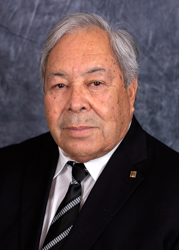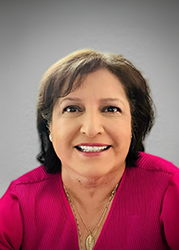Teaching English to Speakers of Other Languages (TESOL)
TESOL Certification Course
What are you waiting for?
About the TESOL Certificate
Do you want to teach English abroad or work from home teaching online?
TESOL is an internationally recognized certificate that certifies students to teach English to speakers of other languages anywhere in the world, and online. The Center for Research & Development in Dual Language & Literacy Acquisition (CRDLLA) at Texas A&M University offers a 120-hour, self-paced, online TESOL (Teaching English to Speakers of Other Languages) certification course. This program is designed to equip participants with the necessary skills and knowledge to teach English to non-native speakers globally, including an online platform. You do not need to be a native English speaker or have an existing teaching certification to enroll in this program. Whether it qualifies you to teach in a U.S. public school (K-12) depends on state-specific requirements.
Benefits
- Self-paced, completely online course provides foundational pedagogical knowledge and exposure to research and theory
- Expand your instructional knowledge and skills based on the TESOL International Standards
- Learn how to develop lesson plans, syllabi, and develop your teaching philosophy as applied to all levels of English learners (PK-adults)
- Supportive and experienced instructors
- Prepare for new career opportunities
Certificate Levels and Application
CRDLLA TESOL Certification Course (120 hours)
The TESOL certification program is designed by the Center for Research & Development in Dual Language & Literacy Acquisition (CRDLLA) at Texas A&M University. This is a self-paced 120-hour course. You are welcome to spend more or less time on it, depending on your teaching experiences. The goal is to complete the course within 90 days. Each module contains introduction assignments, discussion activities, group experiences, reflection essays, pretest, posttest, hands-on activities, and a final portfolio project in the last module. After successful completion of the course, you will receive a 120-hour TESOL Certificate.
Purpose of the program: Through interactive experiences with peers as well as with the materials provided, participants will develop their teaching philosophy, and pedagogical skills, and enhance their knowledge of second language acquisition to begin teaching experiences and continue developing professionally to work with Pre-K – 12 English language learners.
This course includes the following modules:
- Module 0: TESOL Course Introduction
- Module 1: Theories of Language Acquisition and Foundations of Language Learning
- Module 2: ESL/EFL Methodology and Language Learning
- Module 3: Language Skills: Teaching and Practice
- Module 4: Unit Plans, Lesson Plans & Syllabus Design
- Module 5: Classroom Management and Professionalism
- Module 6: Language Assessment & Evaluation
- Module 7: Capstone Project: Professional Portfolio & Leadership
FAQs
What can I do with a TESOL certificate? This certificate allows you the flexibility to teach English to non-native speakers anywhere in the world. Teachers with TESOL credentials work overseas in places that include but are not limited to private language, large companies, international schools, and universities. There are also teachers that begin their own teaching practice by opening their own classrooms online after gaining teaching experiences. This avenue allows the flexibility to teach PK-12 as well as adult students. You would also have the capability to teach online from anywhere in the world without leaving your home.
What are the differences between TESOL, TESL, and TEFL? TESOL refers to teaching English to speakers of other languages and is a general name for the field of teaching that includes both TESL and TEFL. TESL refers to teaching English as a second language; these programs are in English-speaking countries for students whose first language is other than English. TEFL refers to teaching English as a foreign language; these programs are in countries where English is not the primary language and is not a lingua franca.
What type of certification do I need to teach ESL/EFL? No single degree, certificate, or license authorizes an individual to teach ESL/EFL in all fields or in all parts of the world. Job requirements are specific to the job. The employer may vary a great deal from one job to another. Depending on the place one is teaching, generally speaking, the minimum qualification to teach English in private language schools throughout the world is a bachelor’s degree and some type of TESL or TEFL certificate.
Will the course give me credits towards a state teaching certification? No, the TESOL certificate is an independent certificate, which provides a short instructional term. (This course is six part of its learning structure. The course runs 90 days focusing on discussing different methods, instructional practices, and theories for practical application. This certificate is not a degree and may not qualify towards a state teaching license or a master’s degree. Please be sure to check your state or ministry’s requirements for teaching certification to be sure.)
Can credits from those courses be used towards a course within Texas A&M? No, the TESOL certificate is an independent credential for continuing learning purposes. In order to acquire credit toward a degree, the participant would have to apply to college or university of their choice.
Does this course count as professional development hours for teachers? No, this certificate will not count for PD credit.
What is the difference between the TESOL certification and a state-issued teaching certification? The process to acquire a state teaching credential is longer than the process developed in this TESOL course. Additionally, the participant needs to take the appropriate state assessments to acquire a teaching credential. The process to acquire a TESOL certificate Is shorter and does not require a state assessment to acquire the certificate.
Do I need to be a certified teacher to qualify for the program? No, you do not have to have a teaching certificate to qualify for the TAMU TESOL program.
Do I need to speak another language to become TESOL certified? No, but to become a TESOL-certified teacher, you must have a strong grasp of the English language. So if you speak a language other than English, yes, you would need to learn English to become certified through this program. You are not required to be able to speak the language of the student(s) you are working with. Being able to speak the language(s) your students speak provides you with the advantage to make better instructional and social connections.
What jobs can I acquire with a TESOL certificate? You would acquire training to expose you to second language teaching toward working with private language companies like VIPKID or language schools, as well as starting your own language classes.
Can I apply for a teaching position in my town? No, you are encouraged to check with your state or ministry’s requirements for the criteria to apply for a teaching position in your town.
How do I take these classes? Are they only online or do I need to physically come to class? Yes, these classes are only online and are found in the Canvas learning management system.
Can I become TESOL certified if I do not speak English? You would need to speak English to engage in this activity. This credential identifies that you have sufficient mastery of the English language and understanding of ESL teaching methods to work with students that speak other languages.
How much work is involved for this course? This course has seven modules. Each module consists of activities that encourage the participant to synthesize and apply what they have learned, researched, and read into their responses.
How long do I have to complete the course? You will have 90 days to complete the course. This time provides students with plenty of flexibility if life gets hectic and you need to pause progress on the course. We encourage participants not to leave the course incomplete for too long because online learning can become overwhelming the closer deadlines approach.
How will I receive my certificate? The CRDLLA will send your TESOL certificate through email.
I still have questions, who do I contact? Please contact Dr. Linda Rodriguez at rgrodriguez086@tamu.edu.
Who do I contact to prove my certificate is authentic? Please contact Dr. Linda Rodriguez at rgrodriguez086@tamu.edu.
CRDLLA TESOL Team

Rafael Lara-Alecio, Ph.D.
Regents Professor

